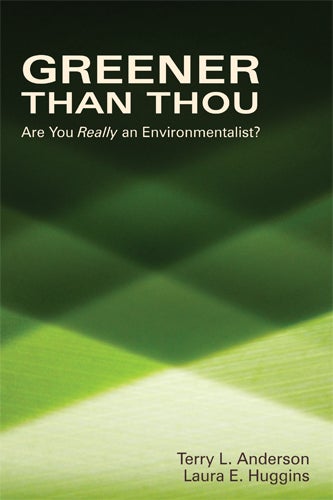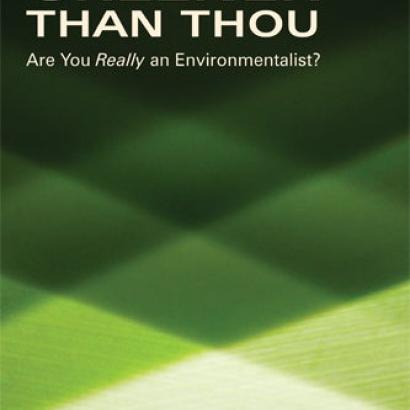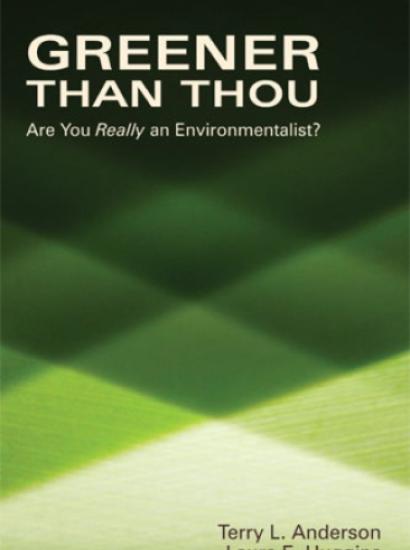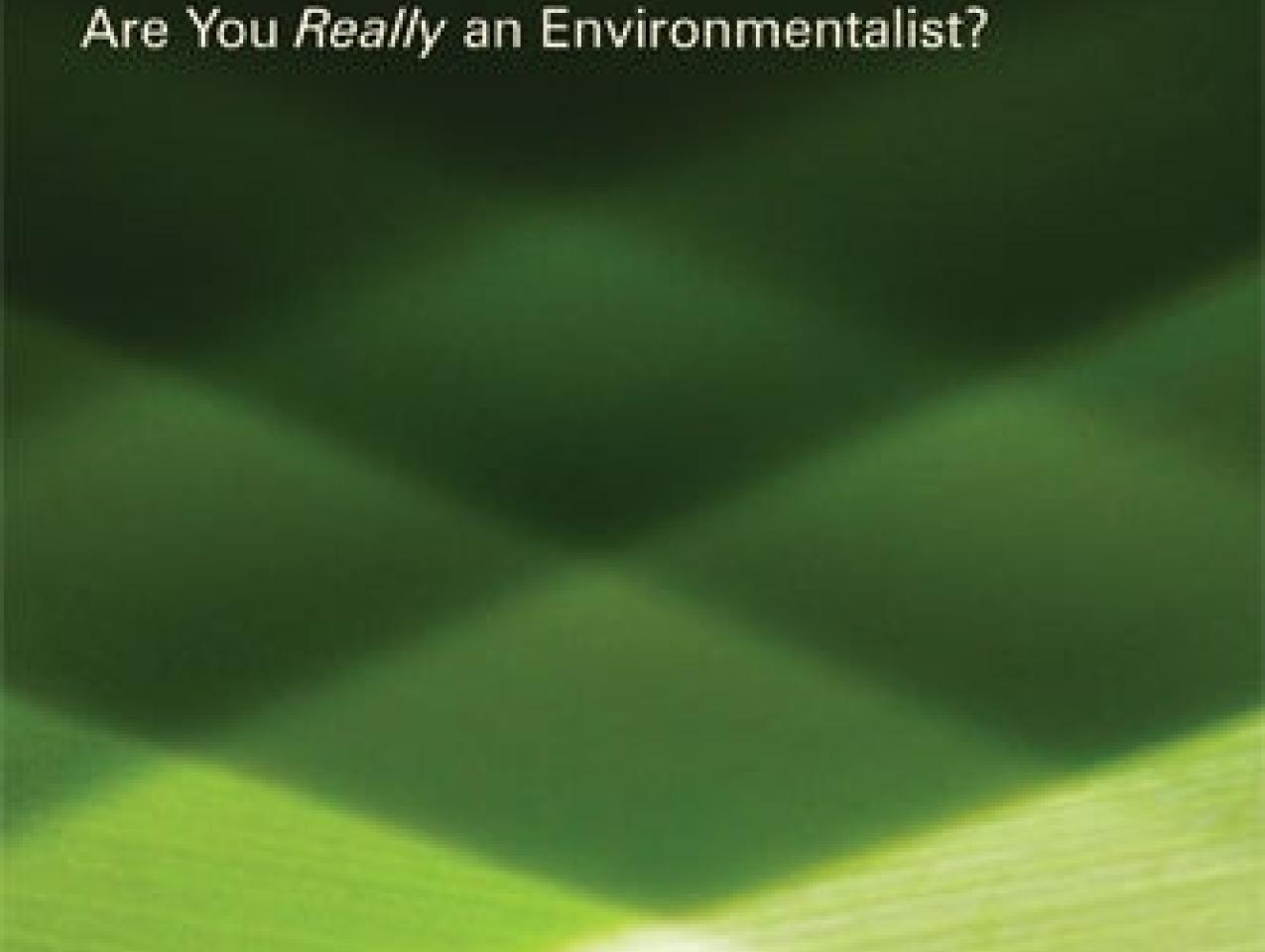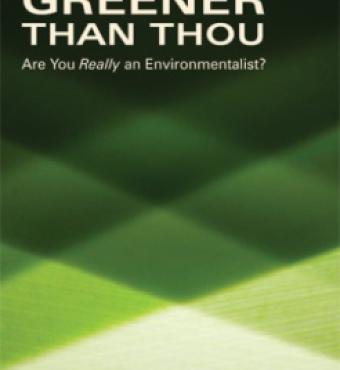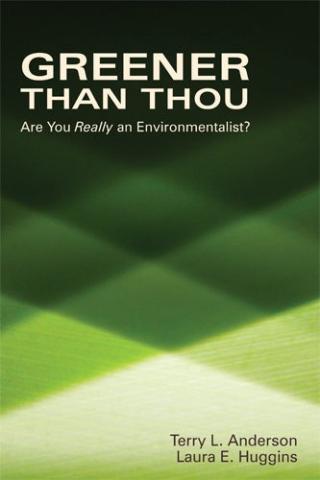It’s impossible to read a newspaper or magazine, turn on the radio or television, or engage in a cocktail party conversation without the words “green” or “eco” popping up. There are green television stations, green termite killers, green cars, eco-moms, eco-fashion, and eco-tours, and the list goes on. Politicians, even the red ones, also vie for the green spotlight. Whoever out-greens the other gets to set the regulations; those who don’t jump on the bandwagon risk being left behind.
When Earth Day was first celebrated in 1970, there were relatively few people who called themselves environmentalists, although rivers were burning, smog kept children from playing outside, and species such as the bald eagle were threatened with extinction. Today, by contrast, when the air and water are cleaner, more land is protected, and wildlife habitat is greatly improved, we are all environmentalists.
Why is everyone so green, and what does it mean to be truly green?
BETTER ECONOMIC HEALTH, BETTER ENVIRONMENT
The main reason for the change is simple: once people have more food, better shelter, improved health care, and other life enhancements, they can afford a higher level of environmental quality. The “environmental Kuznets Curve,” named for the late Harvard economist and Nobel laureate Simon Kuznets, demonstrates this, showing that environmental quality may fall while incomes are rising from very low levels but that it eventually begins to improve (typically at approximately $5,000 per capita for most measures of environmental quality such as clean air and water) as individuals get richer.
U.S. per capita incomes have more than doubled since the first Earth Day. Earning $18,000 per capita four decades ago, Americans could barely afford to clean up burning rivers; today, at $38,000 per capita, we spend billions of dollars to remove minuscule amounts of pollutants, such as arsenic, though they present no real threat to humans or wildlife.
As we have gotten richer, we also seem to have shifted from addressing current environmental problems toward preventing hypothetical ones. On the endangered species front, today’s green focus derives not from observations of actual threatened animals or plants but from theoretical extinctions predicted from biodiversity models. And for the mother of all environmental issues—global warming—we are willing to spend trillions of dollars to reduce carbon emissions despite sound reasons to doubt both the extent to which warming is human-caused and the potential impact of our actions on temperatures in the next century.
As environmental questions get more complex, how do we know if we really are green? Consider the electric car with the sign on its side reading “zero pollution.” True, the electric car has no tailpipe, but what about the coal-fired generating plant that produced the electricity to charge the car’s battery? Does recycling paper really save trees when the pulp for new paper comes mostly from trees that were planted to meet the pulp demand and will not be planted if that demand falls?
As Bjorn Lomborg, author of The Skeptical Environmentalist, points out (using ample data), many environmental fears are unfounded and therefore consume our time and energy without much more than feel-good returns. More recently, in his book Cool It, Lomborg admonishes us to consider what we could accomplish for humanity if we diverted resources being used to combat global warming toward fighting malnutrition, malaria, or AIDS.
TOWARD MORE-INFORMED CHOICES
The first step to acquiring a true shade of green is to sift the green-seeming claims carefully. Consider the push to “eat local.” The next time you are inclined to buy place-based food, ask yourself which products are truly best for the environment. The means of transportation is one of the variables that should go into calculating the carbon cost of your plate. Richard Pirog of the Leopold Center for Sustainable Agriculture at Iowa State University points out that sea-freight emissions are less than half those associated with airplanes; trains are cleaner than trucks; and big rigs are cleaner than pickups. Potatoes shipped by rail from Idaho to New York, for example, might be less polluting than Maine potatoes delivered to New York via tractor-trailer.
How food is grown and harvested is also critical. Author and eat-local advocate James McWilliams touts a study showing that lamb raised in New Zealand and shipped by boat to Britain produces approximately 1,520 pounds of carbon dioxide emissions per ton, whereas British lamb produces 6,280 pounds of carbon dioxide per ton. New Zealand lamb requires less energy to produce because of the country’s balmy climate and extensive pastures. It thus appears more energy efficient for Londoners to buy lamb from the other side of the world than to buy it from their own backyard. Similar findings apply to dairy products and fruit. Moreover, as McWilliams points out, it is impossible for most of the world to feed itself a healthy diet exclusively through local food production.
“While there will always be good reasons to encourage the growth of sustainable local food systems,” McWilliams wrote in the New York Times, “we must also allow them to develop in tandem with what could be their equally sustainable global counterparts.”
Consumers should also pay attention to claims about recycling: before you drop another bottle in a blue bin, ask yourself whether recycling truly saves resources. Research shows that curbside recycling requires a larger fleet of trucks to pick up the same amount of waste, meaning more iron ore and coal mining, more steel and rubber manufacturing, more petroleum for fuel, and more air pollution. Such facts complicate the equation.
We also need to consider how products are recycled. Recycling is a manufacturing process and therefore has an environmental impact. Daniel Benjamin, author of The Eight Great Myths of Recycling, points out that it is often unclear whether secondary manufacturing (such as recycling) produces any less pollution than the primary manufacturing process. The Environmental Protection Agency, for example, examined both virgin-paper and recycled-paper processing for toxic substances, finding twelve. Of those twelve, all but one were present in higher levels in the recycling process.
Informed voluntary recycling efforts can indeed conserve resources, but misinformation about the costs and benefits of recycling can induce people to engage in wasteful activities.
ENVIRONMENTAL ASSETS PAY OFF
One way consumers can be sure they are green is by investing in the environment as an asset. Nonprofit groups, using private resources to conserve land and water directly, produce open space and wildlife habitat. A proliferation of private land trusts is now protecting land by negotiating with landowners for conservation easements through donations or outright purchases. The 2005 National Land Trust Census Report showed total acreage conserved by local, state, and national trusts doubling from 2000 to 2005 to reach 37 million acres.
Regarding for-profit firms, there is much talk about businesses having double bottom lines—that is, they want to both earn profits and improve environment quality. Only by focusing on the first is there any chance of sustaining the second. T. J. Rodgers, CEO of SunPower, which manufactures solar-power systems, puts it well: “I want solar if it makes money and I don’t want solar if it doesn’t make money.” By focusing on profits, businesses can be the perfect engine for environmental sustainability.
Whether saving energy, conserving soils, replanting trees, or husbanding nonrenewable energy sources, the private sector has a far better track record than government when it comes to economic and environmental efficiency. Conservation Forestry, for example, works to acquire and manage large forests by combining money from investors and conservationists. Such partnerships preserve jobs, habitat, and recreation alike. The investment fund makes money for its investors and leverages the resources of its conservation partners.
Because we live in a rich country, we can all afford to be environmentalists. But the green crusade, like all crusades, oversimplifies the issues. Green thoughts do not necessarily lead to improvements in environmental quality. Instead, conservationists and environmentalists of all political stripes need to look for practical actions anchored in substance, not form. And they must find ways to take the private incentives that power America’s economy and harness them to the environmental bandwagon.







